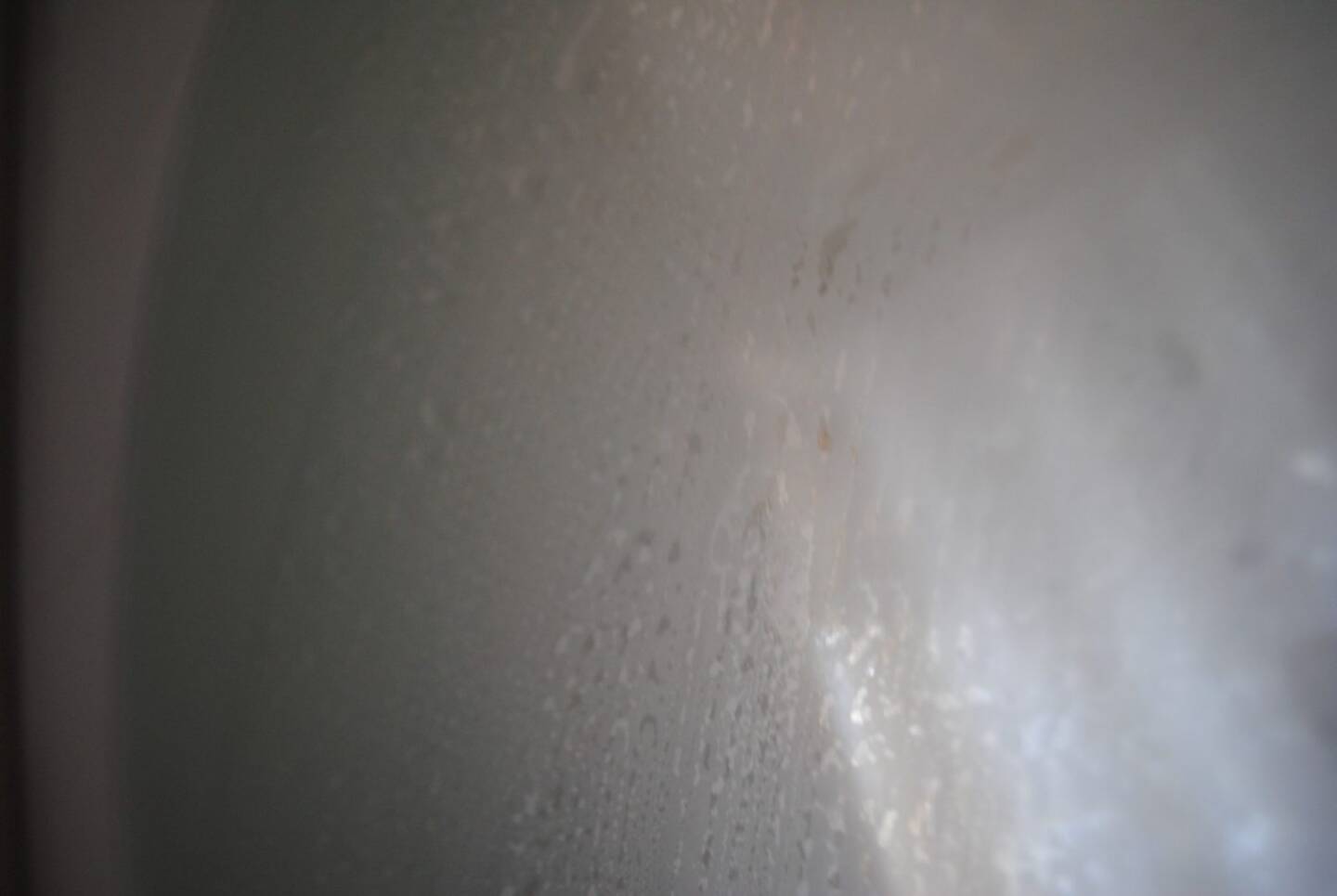It’s that time of year again folks. Autumn is here and the temperatures are dropping. We’re wrapping up again. We’re also getting external condensation on the outside of our energy efficient windows on a morning. Cue customers ringing up offices claiming there is something wrong with their windows!
Educate your client
The only way to try and preempt this sort of thing is to educate the customer right at the beginning of the process. Tell them straight away that on some occasions, usually in Spring and Autumn, when the temperatures are at certain points, the outside of their windows may get condensation. But don’t just say it, tell them why it happens. If you need an example, here’s what it says on the Saint-Gobain UK website:

Surface condensation will appear on face 1 of the insulating glazing if the temperature on this face of the glazing is significantly lower than the external air temperature and if the dew point
(i.e. temperature at which water vapour becomes liquid) of the external air is higher than the temperature of the glass.
The surface temperature on the outside of glazing is dependent on:
-The heat flow from the interior passing through the glass. This depends on the difference in temperature between the internal surface and the external surface of the glazing and the U-value of the glass
-The heat exchange by convection with the external air
-Heat loss by radiation mainly to the sky.
Various studies and measurements carried out by the CSTC have shown that heat exchange by radiation is relatively limited in overcast weather. However, when the sky is clear at night, there are significant heat losses to the sky.
The effect of radiation from a glazed surface to the sky can be compared with a car parked outdoors at night in clear (cloudless) weather: in the morning, some parts of its outer surface are wet, or even covered in frost, even if it has not rained. When the car is parked alongside a building, the windows on the building side are never wet, because the building significantly reduces the heat exchange by radiation between the car windows and the sky.
What can be done?
Well, not a lot. Major glass companies have developed certain glasses that combat the condensating effect. Perhaps companies like Pilks and Saint-Gobain think this is going to be a problem that will get worse in time, hence them bringing out improved glass. There will be a premium for glass like this, not to mention extra paperwork and organisation by fabricators and installers.
Personally I don’t think this is a big issue. The external condensation is physical proof that the glass is doing it’s job. It’s keeping the heat in. It’s also an effect that doesn’t last all that long. You get up in the morning and by the time you’ve had a shower and your breakfast, it will have probably gone. It’s just not that big a deal. I know that is easy for me to say coming from the industry, but there are some very highly strung consumers out there who will think this is outrageous. But in the grand scheme of things, sporadic and temporary external condensation isn’t actually a problem.
My advice is to warn customers prior to installation that this effect could occur, that way you are covered and the customer cannot then say they weren’t warned.
As always, all comments welcome in the section below.






Exactly right there. The calls from surveyors and customer managers started right on cue this week with the first real classic weather for it of the year. The approach you outline is exactly the right way a salesperson should go, and it’s quite tedious to have to explain all this to the same firms year after year because their salesmen don’t educate themselves or their customers. The pre-warning and pre-educating is crucial. Customers are pretty illogical and unreasonable on the matter, as they just go straight to the conclusion that because it’s the”double glazing” industry, that somehow it must be… Read more »
Nice post, this explains the glazier perspective well. Just to add some info: special coatings can be designed to change the heat flow you describe, but it might also help to change how much dirt and grime is there. Condensation is way more visible if you have even a thin layer of dirt on your windows, because the water brings all the dirt together into a little bead of crap. If you’re feeling gutsy, tell your customers to keep their filthy windows clean. Or, on top of specialty glass designed to be “anti-condensation”, you might check out self-cleaning glass (aka… Read more »
not had too many external condensation calls yet, but as ever as soon as the sun got low and bright at the start of this week we got the old K haze phone calls, – “can only see it for half an hour”, “you have to come and inspect it but only on a bright day, dont come tomorrow as it may not be the right light to see it, we will call you when its doing it” “cant see it from the outside but the unit must be dirty as i can see it when the suns right on… Read more »